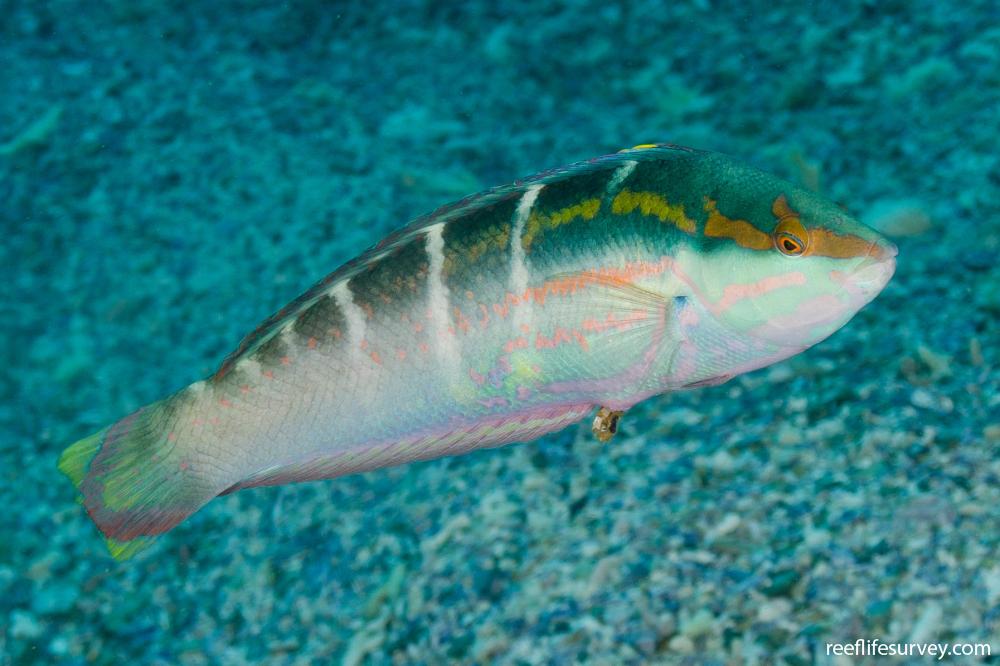Coris dorsomacula
Pale-barred coris | Pink-lined Coris | Pink-lined Rainbow Wrasse | Pinklined WrasseSimilar Species
Same Genus
Distribution
Temperate Australasia, Tropical Indo-Pacific
Description
Pale pink to light green background with a wide red/brown stripe from snout through eye, running along upper body tapering towards rear and becoming shorter and more fragmented with age, broken by thin pale bars on body, thin less distinct pink/red stripe on lower head splits into two at pectoral fin and degrades into spots along sides, small black spot at rear base of dorsal fin which also fades with age and dark spot at front of dorsal fin. Yellow and pink flag tail. Distinguished by location from similar C. caudimacula (Spot-tail Wrasse) which is found in the Indian Ocean.
Information
Max Size: 20 cm
Sea Temperature Range: 16.2-29°C
Depth: 2-45m
Habitat Generalization Index: 5.88
Also referred to as the SGI (Species Generalisation Index), this describes the habitat niche breadth of the species. Species with values less than 15 are found in a relatively narrow range of reef habitat types (specialists), while those over 25 may be found on most hard substrates within their range (generalists). Learn more here.
Conservation and Rarity
IUCN Status: Least Concern
Occurrence: Infrequent (7.9% of sites)
Occurrence describes how often the species is found on surveys within its distribution. It is calculated as the % of reef sites surveyed by RLS divers across all the ecoregions in which the species has been observed
Abundance: Few (2 per transect)
Abundance is calculated as the average number of individuals recorded per RLS transect, where present.
Edit by: Joe Shields



























